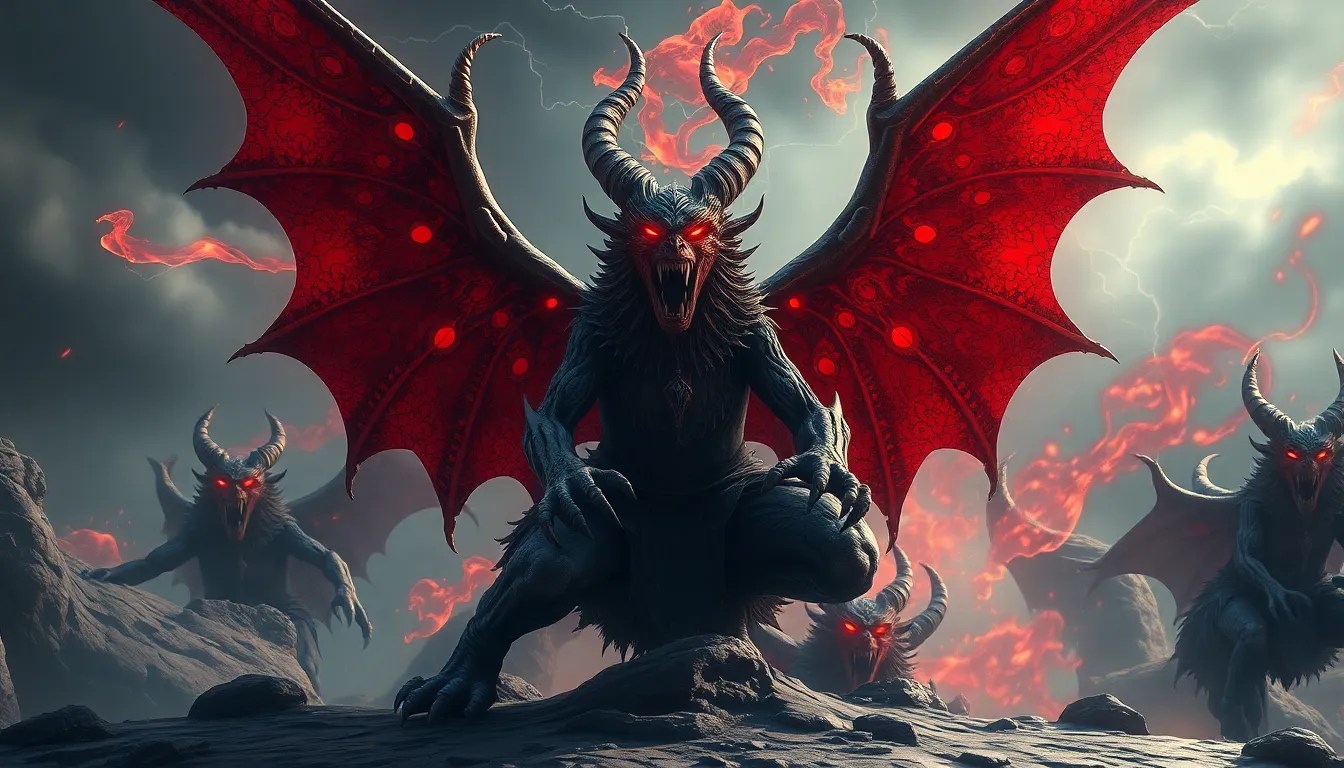The Enigmatic World of Babylonian Demons and Spirits
I. Introduction to Babylonian Mythology
Babylonian mythology, rooted in the ancient civilization of Mesopotamia, encompasses a rich tapestry of beliefs that shaped the cultural identity of its people. This mythology is characterized by its pantheon of gods, goddesses, demons, and spirits that influenced various aspects of life and the cosmos.
Demons and spirits hold a significant place in Babylonian culture, often representing the duality of existence—good and evil, creation and destruction. They were not merely malevolent beings; many were seen as protectors or guides, illustrating the complex relationship between humans and the supernatural.
This article aims to delve into the intriguing world of Babylonian demons and spirits, exploring their characteristics, roles, and the rituals associated with them, while highlighting their impact on both ancient and modern interpretations of spirituality.
II. The Nature of Demons and Spirits in Babylonian Beliefs
In Babylonian beliefs, demons and spirits were classified based on their attributes and roles within the cosmic order. This classification can be broadly divided into two categories:
- Benevolent spirits: These entities were viewed as protectors, guiding humans and safeguarding them from harm.
- Malevolent demons: Often associated with chaos and misfortune, these beings were believed to inflict suffering and illness.
The duality of these entities reflects a profound understanding of the balance necessary for harmony in the universe. They were integral to the cosmic order and were often invoked in daily life for guidance and protection.
III. Major Babylonian Demons
A. Pazuzu: The King of the Wind Demons
Pazuzu is one of the most well-known demons in Babylonian mythology, often depicted with a combination of human and animal features, including a dog-like face and bird-like feet. He is recognized as the king of the wind demons, embodying both the destructive and protective aspects of storms.
His myths often revolve around his battles against other malevolent entities, positioning him as a guardian against evil spirits. Cultural significance is evident in the use of Pazuzu’s image as a protective talisman, believed to ward off illness and misfortune.
B. Lamashtu: The Child-Killing Demon
Lamashtu is a fearsome figure in Babylonian mythology, known for her terrifying nature and her role as a child-killer. She is often depicted with the body of a woman, the head of a lioness, and bird-like feet. Her attributes include an insatiable hunger for children and a malicious intent towards pregnant women.
To protect against Lamashtu, families engaged in various rituals, including the use of amulets inscribed with protective spells. These efforts were crucial in safeguarding the vulnerable and ensuring the continuation of life.
IV. Spirits of the Underworld
In Babylonian belief, the afterlife was a significant aspect of existence, with spirits playing a crucial role in guiding souls through their journey. The underworld, governed by the goddess Ereshkigal, was seen as a dark and foreboding realm where the dead resided.
Ereshkigal, often depicted as a powerful and complex figure, ruled over this domain with authority, overseeing the fate of the deceased. The journey of the soul after death involved navigating through various challenges, guided by spirits who either aided or hindered the deceased’s passage.
V. Protective Spirits and Deities
Household spirits, known as Lamassu, were an essential aspect of Babylonian life. These benevolent entities were often depicted as composite creatures with human heads and animal bodies, serving as guardians of homes and families.
Protective deities played a vital role in daily life, providing blessings and safeguarding communities. Rituals and offerings were commonplace, with families seeking favor from these spirits to ensure prosperity and protection. Common practices included:
- Offering food and drink to household spirits.
- Creating altars adorned with symbols of protection.
- Reciting prayers and hymns dedicated to the deities.
VI. Demons in Babylonian Literature
Babylonian literature is rich with tales and texts featuring demons and spirits, with key works such as the “Epic of Gilgamesh” and various incantation texts highlighting their importance. These narratives often explore themes of morality, the struggle between good and evil, and the quest for knowledge.
The symbolism of demons in these stories serves multiple purposes, reflecting cultural values and offering insights into the human condition. Furthermore, the influence of Babylonian mythology can be traced through later cultures and religions, showcasing its enduring legacy.
VII. Rituals and Exorcisms
Exorcism rituals were a critical aspect of Babylonian society, utilized to ward off malevolent demons and restore balance. Various methods were employed, including:
- Recitation of incantations and spells.
- Use of protective amulets and symbols.
- Offerings to appease angry spirits.
The importance of these rituals cannot be overstated, as they provided a sense of security and control over the chaotic forces of the supernatural. Priests and priestesses were central figures in these practices, acting as intermediaries between the divine and the mortal realm.
VIII. Conclusion
The legacy of Babylonian demons and spirits continues to resonate, offering a fascinating glimpse into the ancient worldview. These entities, with their complex natures and roles, reflect the human endeavor to understand and navigate the mysteries of existence.
In modern times, the relevance of these beliefs persists, as many still seek meaning in the spiritual realm. The enigmatic world of Babylonian mythology invites us to explore the depths of our own beliefs and the universal themes of good, evil, and the unknown.
Ultimately, the study of Babylonian demons and spirits reveals a profound connection between humanity and the divine, emphasizing the intricate web of life that binds us all.



